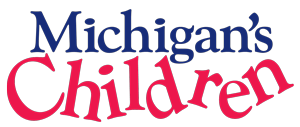Does GSRP Have the Wrong Intentions?
Last week, the Michigan House and Senate education committees heard from Susan Broman, Deputy Superintendent of the MDE – Office of Great Start, and others on the Governor’s proposal to expand the Great Start Readiness Preschool Program (GSRP). That’s right, in case you’ve missed it, the Governor has proposed an unprecedented expansion of Michigan’s public preschool program for four-year-olds at-risk of being under-prepared for kindergarten. Specifically, he’s calling for a $130 million increase over the next two years starting with a $65 million increase in fiscal year 2014, the budget that the Michigan Legislature is currently developing. And all who attended the hearings got the first real public glimpse of opposition to this GSRP expansion.
I will say, I wasn’t surprised by the questions asked, and if anything, most of them helped to make the case about why we really need to invest in high quality early learning programs.
The Mackinac Center argued that the highest return on investment was seen in programs like the landmark Perry Preschool Program in Ypsilanti that served at-risk three- and four-year old African American children. And it’s true. The highest returns are seen in programs that invest in quality (the Perry Preschool Program cost on average $12,270 per child in 2013 dollars). Luckily, GSRP is also a high quality early education program that’s significantly cheaper than the Perry Preschool but has improved student outcomes while saving taxpayer dollars.
Legislators rightfully asked about the eligibility requirements for GSRP, questioning whether serving families up to 300% of the federal poverty level (FPL) creates a middle-class program rather than targeting the families who need it most. The answer is no. GSRP specifically prioritizes children in families at 200% FPL or below – 200% FPL being $47,100 for a family of four. Families above 200% FPL are only eligible for GSRP if the child faces serious risk like a developmental delay, serious behavioral issues, primary home language not being English, child abuse/neglect, etc. For families above 300% FPL (less than 10% of GSRP recipients are currently above 300% FPL), their child must face at least two risk factors to be eligible for the program. So, we’re not talking about expanding a middle-class program, but rather serving children who are most at-risk of starting school behind. (Want to know more about GSRP eligibility? Check out this eligibility flow chart from MDE.)
Other legislators questioned whether GSRP was essentially taking children away from their homes and taking away parental responsibility. Again, the answer is no. Parents understand the benefits of preschool, which is why the majority of middle- and upper-income families send their children to pre-k programs. Children and families who would benefit the most from high quality early childhood programs (as evidenced by Perry Preschool and GSRP evaluations) are children of color and children from low-income families with multiple risk factors who face difficulty accessing these programs. (Today, there are about 16,000 four-year-olds below 200% FPL who are not accessing GSRP.) Additionally, GSRP programs are required to have a family engagement piece built right-in, such as providing a minimum of four family contacts per year to involve families in the children’s education at school and to help them provide educational experiences for the children at home; and including GSRP parents in the programs’ regional advisory committees. (See more information about parent involvement requirements in GSRP.)
Finally, there was much confusion among legislators about the Head Start Impact Study that showed a third-grade “fadeout” and if this might mean that GSRP shouldn’t be expanded as well – demonstrating confusion about how the two programs interplay. Study after study have confirmed the significant long-term benefits that Head Start graduates experience compared to their peers such as high school completion, college attainment, secure employment, and healthier lives. And in fact, for the most at-risk Head Start graduates – English language learners, foster kids, children of color, and children with special needs – fadeout was not evident. If anything, any “fadeout” demonstrates the need to strengthen early childhood programs at the same time as strengthening K-12 education. The federal government is already working to improve Head Start quality through re-competition. Michigan must also step to the plate by continuing to support high quality early learning experiences through GSRP expansion while also strengthening our K-12 education system to better serve our most challenged students.
Next week, the House is expected to unveil their recommendations for fiscal year 2014; and the Senate is expected to do the same at the beginning of April. We must continue to talk to our legislators about the benefits of GSRP to our children, our family, and our community. To assist in your conversations, take a look at our GSRP Q&A fact sheet with legislators’ commonly asked questions. And check-out our guest column in Bridge Magazine talking about the benefits of GSRP within the larger P-20 education continuum.
-Mina Hong
